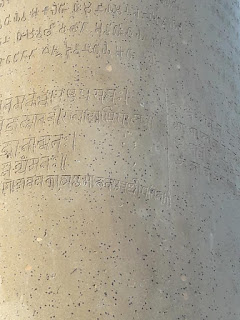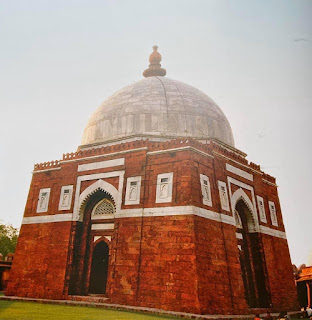Delhi Heritage Trail :38
Tomb of Alauddin Khilji
Delhi has many beautiful Tombs for lesser known Kings, Sultans and Nobles but this stone built Tomb inside the complex of Qutub Minar is the tomb of the great Sultan Allauddin Khilji the great king of Khilji dynasty in the 14 th century. The emperor who thought himself of second Alexander after more than 1600 years is interred in a nondescript Tomb without any architectural beauty inlaid Marbles and carvings.
Alauddin ruled the greater part of the subcontinent from Bengal in the East to Bamiyan in the West in Afghanistan and from Deccan in the South to Hindukush in the North. He was the most powerful ruler and was a harsh administrator. He even built the Chor Minar to hang the heads of those who were killed as punishment . He was so ambitious that he wanted to overshadow the Qutub Minar by building the Alai Minar in the complex. But he could build only one storey in his lifetime and his successors never bothered to continue it and it lies ruined a little away from his tomb. He also built the Siri Fort city nearby and Hauz Khas complex and the water tank which are a great testimony to his administration.
The Tomb of Alauddin is very simple black stone structure not in keeping with his name, fame and statute. It is said his body was brought from Siri nearby and buried here in the complex. The tomb lies unnoticed inside to any visitor to the Qutub complex .
When I visited last I spent a little time sitting near the Tomb wondering whatever may be your might and fame death is a great leveller.















